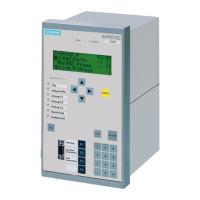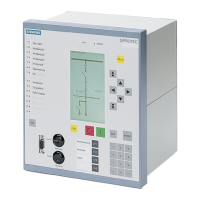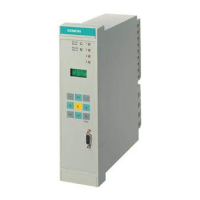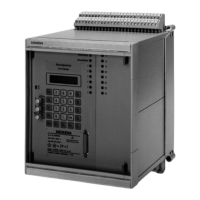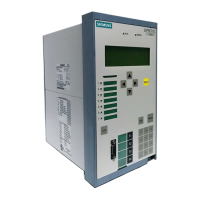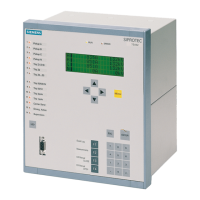2.10 Automatic Reclosure Function (optional)
127
7SD610 Manual
C53000-G1176-C145-4
is not indicated when it expires. However, if the circuit breaker does not indicate its
ready status for a longer period than the monitoring time, reclosure is dynamically
blocked (see also above under margin heading „Reclosure Blocking“).
Processing the
circuit breaker
auxiliary contacts
If the circuit breaker auxiliary contacts are connected to the device, the reaction of the
circuit breaker is also checked for plausibility.
In the case of single-pole tripping this applies to each individual breaker pole. This
assumes that the auxiliary contacts are connected to the appropriate binary inputs for
each pole („>CB1 Pole L1“, No. 366; „>CB1 Pole L2“, No. 367; „>CB1 Pole
L3“, No. 368).
If, instead of the individual pole auxiliary contacts, the series connections of the nor-
mally open and normally closed contacts are used, the CB is assumed to have all
three poles open when the series connection of the normally closed contacts is closed
(binary input „>CB1 3p Open“, No. 411). All three poles are assumed closed when
the series connection of the normally open contacts is closed (binary input „>CB1 3p
Closed“, No. 410). If none of these input indications is active, it is assumed that the
breaker is open at one pole (even if this condition also exists theoretically when two
poles are open).
The device continuously checks the position of the circuit breaker: As long as the aux-
iliary contacts indicate that the CB is not closed (three-pole), the automatic reclosure
function cannot be started. This ensures that a close command can only be issued if
the CB has previously tripped (out of the closed state).
The valid dead time begins when the trip command disappears or signals taken from
the CB auxiliary contacts indicate that the CB (pole) has opened and that the trip
command has disappeared.
If, after a single-pole trip command, the CB has opened three-pole, this is considered
as a three-pole tripping. If three-pole reclose cycles are allowed, the dead time for
three-pole tripping becomes active in the operating mode with trip command (see
margin heading „Operating modes of the automatic reclosure“, above); in control by
pickup the pickup diagram of the starting protective function(s) still applies. If three-
pole cycles are not allowed, the reclosure is blocked dynamically. The trip command
was final.
The latter also applies if the CB trips two poles following a single-pole trip command.
The device can only detect this if the auxiliary contacts of each pole are connected in-
dividually. The device immediately initiates three pole coupling which results in a
three-pole trip command.
If the CB auxiliary contacts indicate that at least one further pole has opened during
the dead time after single-pole tripping, a three-pole reclose cycle is initiated with the
dead time for three-pole reclosure provided that this is permitted. If the auxiliary con-
tacts are connected for each pole individually, the device can detect a two-pole open
CB. In this case the device immediately sends a three-pole trip command provided
that the forced three-pole trip is activated (see Section 2.10.2 at margin heading
„Forced three-pole trip“).
Sequence of a
three-pole reclose
cycle
If the automatic reclosure function is ready, the fault protection trips three-pole for all
faults inside the stage selected for reclosure. The automatic reclosure function is start-
ed. When the trip command resets or the circuit breaker opens (auxiliary contact cri-
terion) a(n) (adjustable) dead time starts. At the end of this dead time, the circuit
breaker receives a close command. At the same time, the (adjustable) blocking time
is started. If, when configuring the protective functions, at address 134 AR control
www . ElectricalPartManuals . com
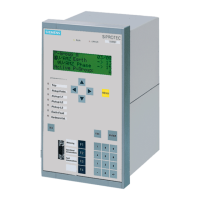
